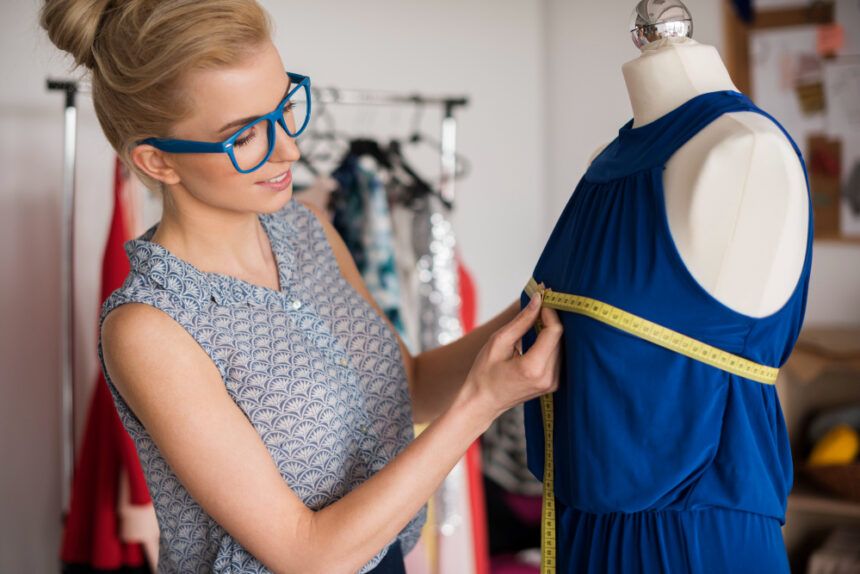Clothing alteration services are an essential yet often overlooked part of fashion and wardrobe care. Whether it’s a matter of shortening trousers, tapering sleeves, or taking in a waist, these services ensure that garments complement your body shape and personal style, making off-the-rack purchases feel custom-made. This summary explores everything you need to know about alterations—from understanding the concept and its types to choosing the right service and maintaining altered garments.
Understanding The Meaning Of Clothing Alterations

Many confuse basic clothing repairs like patching holes or sewing buttons with true alterations. In reality, clothing alterations involve changing a garment’s structure to improve fit and comfort. This could mean slimming down a jacket’s silhouette, adjusting sleeve length, or expanding seams to allow more room.
Alterations bring out the full potential of garments, especially when they’re almost perfect but not quite right. They also offer a sustainable and economical way to extend the life of your clothes by adapting them to changes in body shape or fashion preferences. By understanding the meaning of alteration in clothing, you empower yourself to elevate everyday outfits without replacing them.
Types Of Clothing Alterations
Clothing alterations can range from simple adjustments to complex reworkings of a garment. Some of the most common types include:
Hem Adjustments
Hems are the bottom edges of pants, skirts, or dresses. Tailors can shorten or lengthen these depending on style or need. Adjusting the hem ensures that clothing hangs correctly and prevents fraying or bunching.
Waist and Side Seam Adjustments
A poorly fitted waist or too-wide side seams can throw off the look of a garment. Taking in or letting out these seams is a common alteration that drastically improves fit and comfort, especially in fitted garments like jeans or dresses.
Sleeve Modifications
Sleeves can be shortened, lengthened, tapered, or widened. If sleeves or armholes are too tight or loose, adjusting them can dramatically improve both appearance and mobility.
Overall, these types of alterations help garments look like they were tailored just for you.
Who Offers Alteration Services?
Traditionally, tailors and seamstresses provide alteration services. These professionals have the training and experience to modify garments for improved fit and appearance. However, many skilled individuals who sew and repair clothing as a hobby or part-time job also offer quality services, especially for simpler tasks.
In Australia, you’ll find a variety of options—ranging from specialized bridal and formalwear alteration businesses to home-based sewers offering basic fixes like hems and seam repairs. Some services even provide mobile or online appointments for convenience.
Choosing the right person depends on:
- Complexity of the alteration
- Type of garment or fabric
- Budget
- Turnaround time
For complex or delicate items like wedding gowns or heirloom pieces, opt for an experienced professional. For minor tasks like button replacement or hemming, someone who sews casually could be just right.
Choosing An Alteration Service In Australia
With so many tailoring and alteration options available across Australia, it’s important to choose wisely. Consider the following:
- Location – Choose someone nearby if multiple fittings are needed. Convenience matters when you need timely service.
- Experience – Professionals with experience handling different fabric types and complex garments tend to offer better results.
- Specialties – Some alteration services specialize in bridal, formalwear, or vintage clothing. For intricate pieces, it’s best to work with someone familiar with that garment category.
Before selecting a service, read online reviews, check photos of past work, or ask for recommendations. Visiting the shop can also give you insight into their customer service and attention to detail.
Tips For Maintaining Tailored Garments

After your alterations are done, proper care ensures the results last. Here’s how to keep your tailored garments in top shape:
1. Follow Care Labels
Always read the washing instructions. Gentle cycles or handwashing are better for delicate fabrics. Use mesh laundry bags to reduce wear and tear.
2. Air Dry When Possible
Avoid using dryers, which can shrink or damage fabric. Hang-dry garments to retain the shape and integrity of alterations.
3. Iron With Caution
Ironing is essential for crisp seams and hems. Use low settings or a pressing cloth on delicate fabrics. Always test a small hidden section first to avoid scorching.
4. Be Gentle While Wearing
Tight clothing can put stress on seams or zippers. Avoid stretching, overloading pockets, or tugging at fabric to maintain fit and avoid repairs.
Conclusion: Why Alterations Matter
A perfectly altered piece of clothing feels like a second skin. Whether it’s narrowing pant legs, shaping a waistline, or adjusting sleeves, alterations significantly boost your comfort and confidence. Clothes that fit well look more elegant, feel better, and often last longer.
The great news? You don’t need to replace an entire wardrobe to feel brand new. From skilled tailors to part-time sewers, plenty of professionals in Australia can help you unlock the full potential of your garments. So next time your trousers drag or your blazer pinches, don’t discard them—transform them.
With proper alterations and ongoing care, your clothes will keep up with your life, your body, and your style. Consider this your invitation to invest in fit, comfort, and timeless fashion—without the hefty price tag of buying new.



